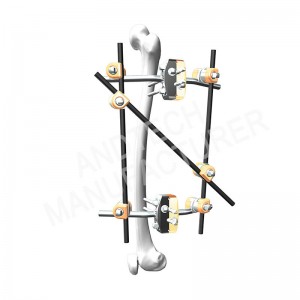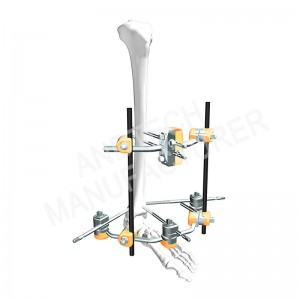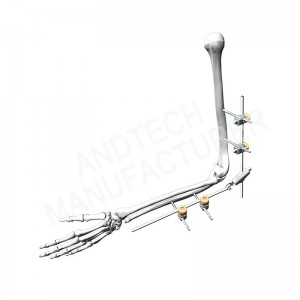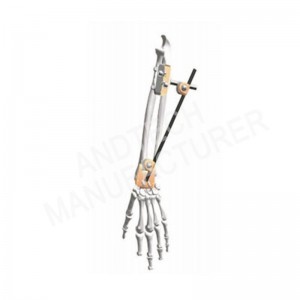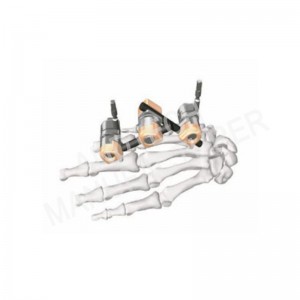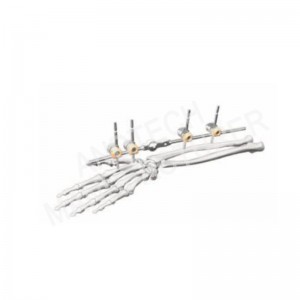Dissection IV Φ5 For Pediatric Surgery
The components of an external fixator generally fit into one of four basic configurations, each with unique clinical and mechanical characteristics.
Basic configuration: A plane with small configuration obstacles is generally sufficient for most damage situations. The two-plane configuration is more effective and is often used in severe comminuted fractures or bone defects and in arthrodesis and osteotomy.
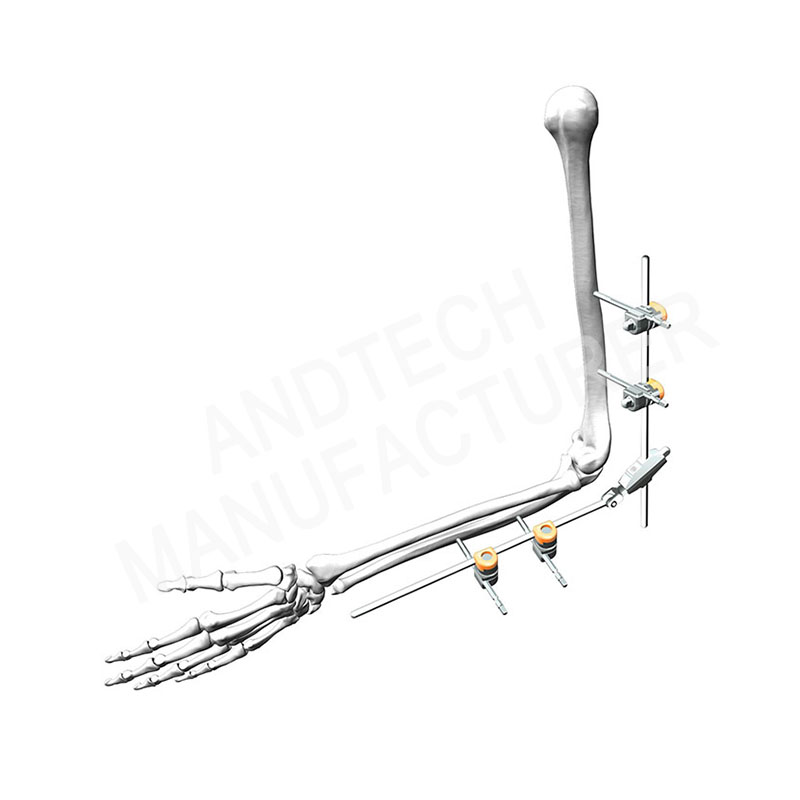
Children's elbow fixation 5mm
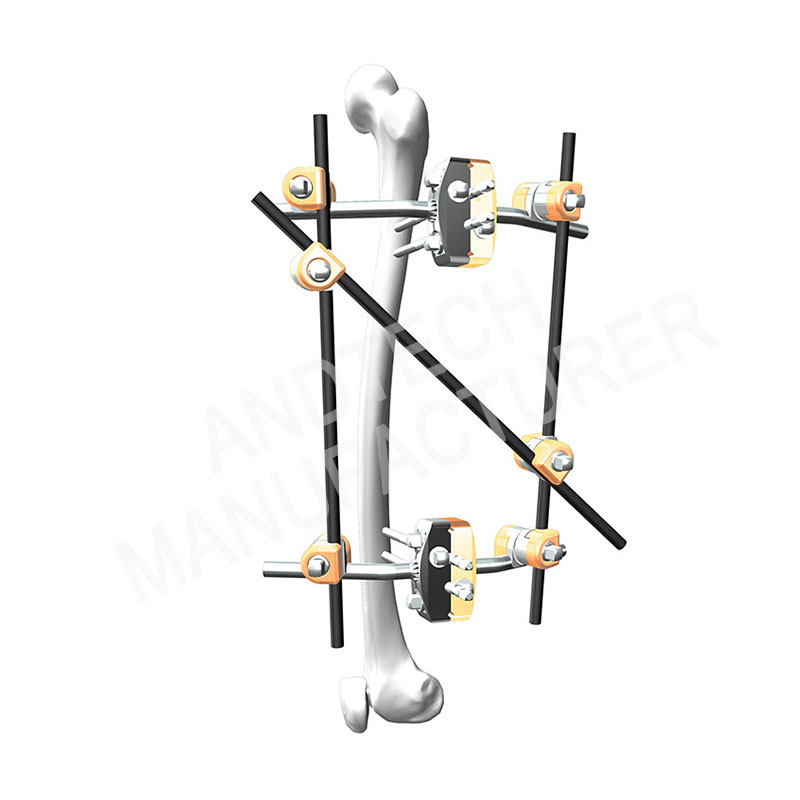
Children's femur fixation 5mm
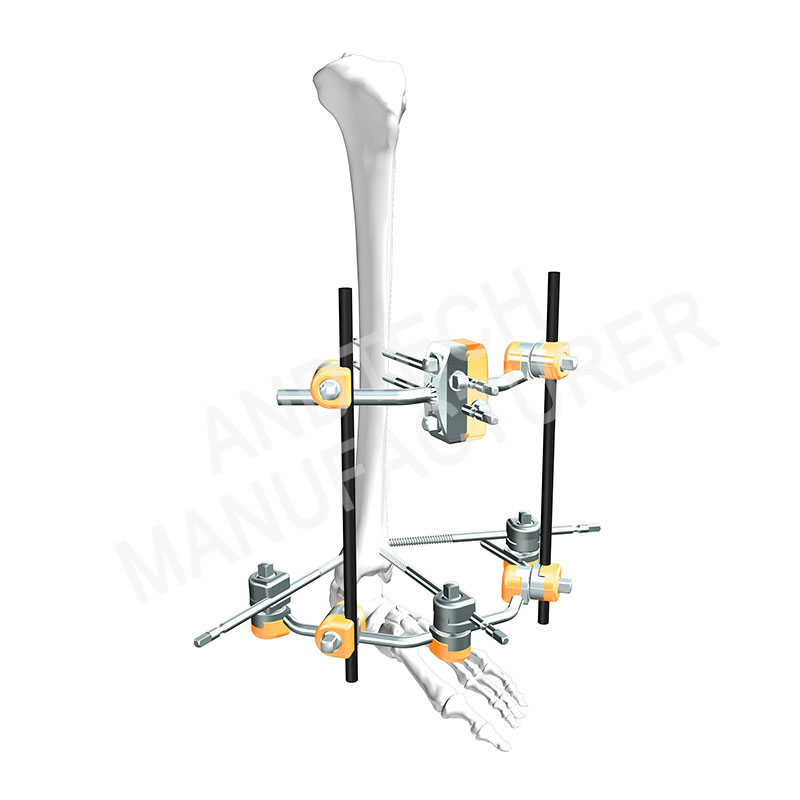
Children's tibia fixation 5mm
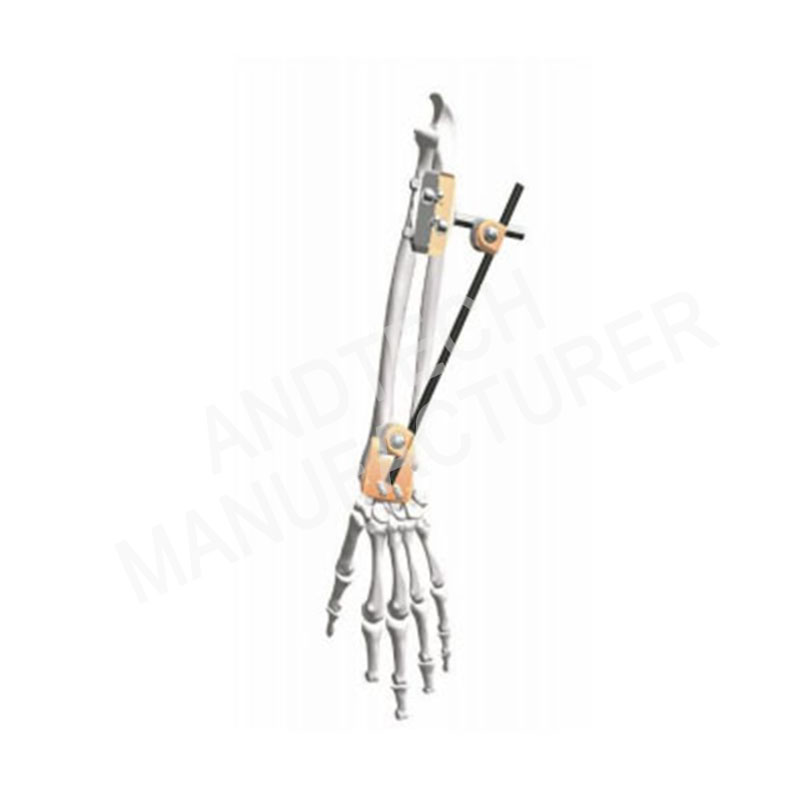
Distal Radius Fixation 5mm
Ways to improve stability:
1. Select an appropriate and stable spatial configuration
2. Increase the number of fixed needles
3. Increase the diameter of the fixed needle (choose a thick traction needle when possible)
4. Increase the needle distance in the needle group
5. Reduce the needle distance between needle groups
6. Increase the number of connecting rods
7. Reduce the distance between the connecting rod and the bone
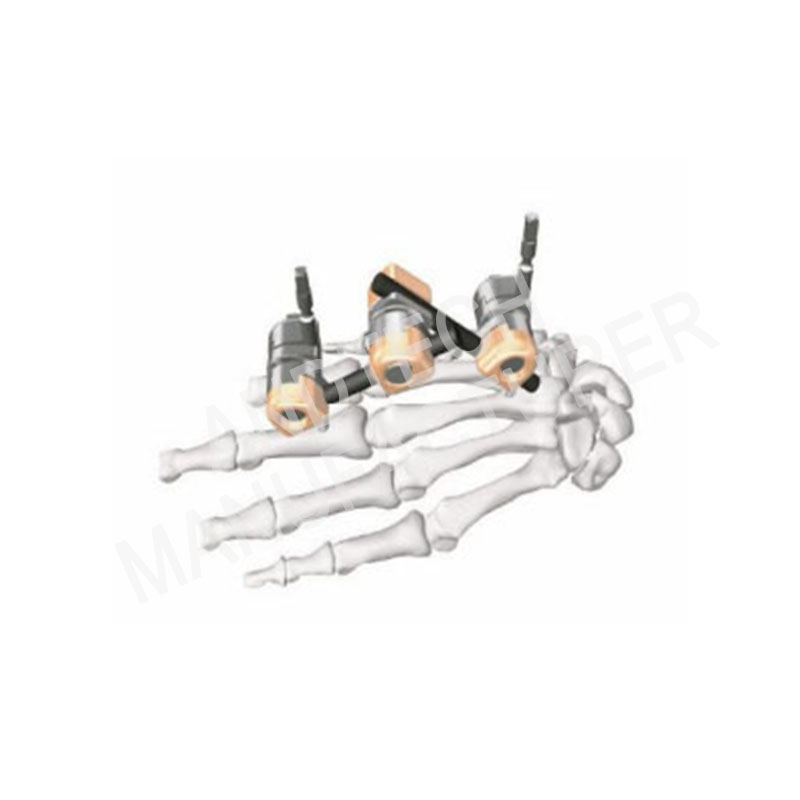
Phalangeal fixation 5mm
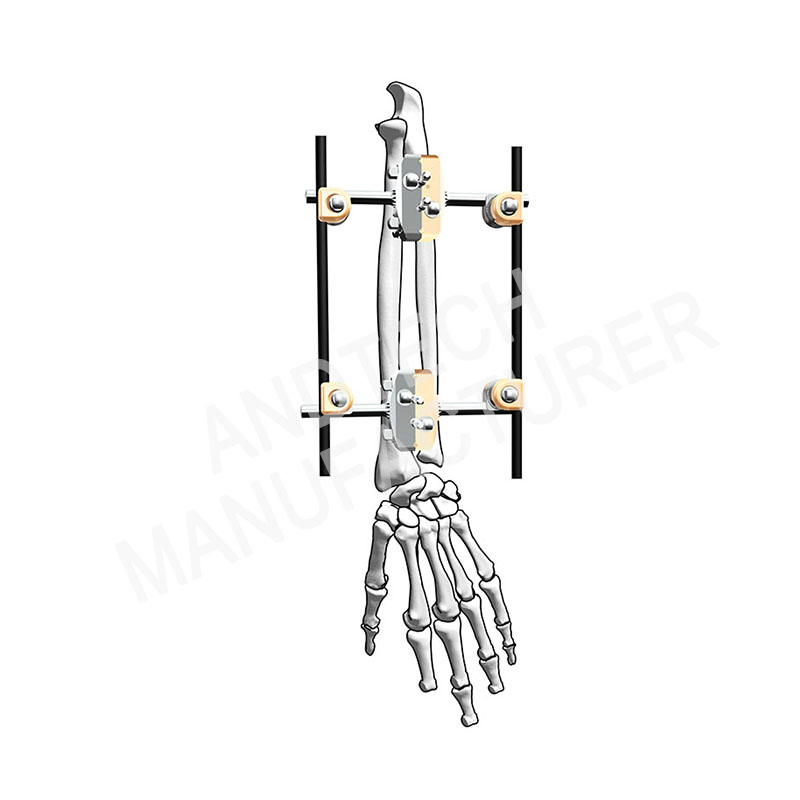
Radius fixation 5mm
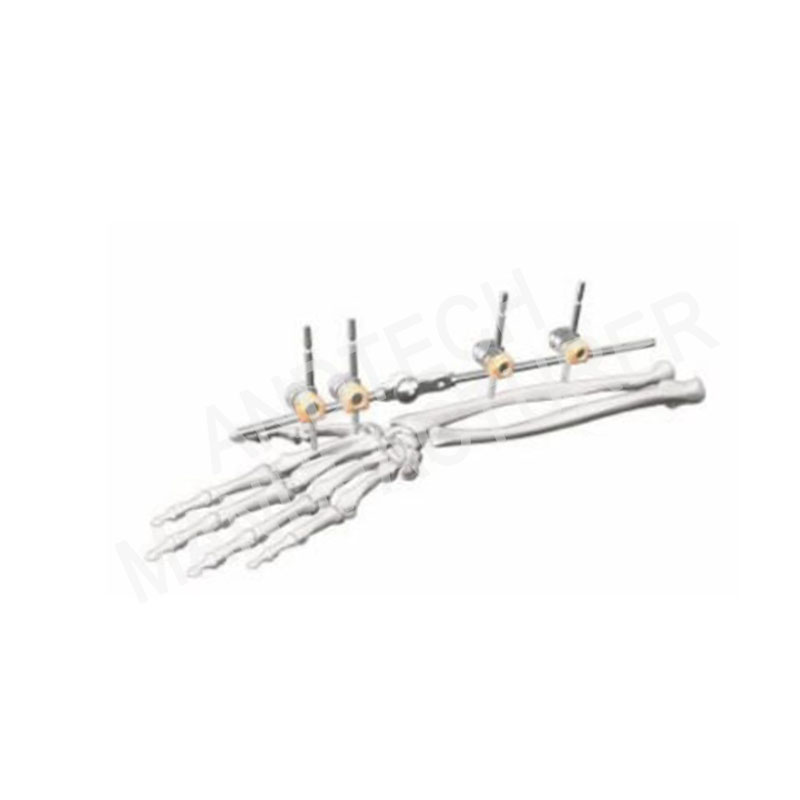
Wrist Fixation 5mm
Medical Tips
The external fixation bracket has the advantages of simple operation and safety, which can enable patients to move on the ground and perform functional exercises in the early postoperative period, and reduce various complications caused by long-term bed rest and super-joint fixation. In addition to the complications of the operation itself, the external fixator treatment will also affect the patient's life and psychology due to long-term stent fixation. Correct nursing and rehabilitation training can help patients build confidence in overcoming the disease and deepen their understanding of external fixation stent treatment methods, thereby effectively reducing complications and obtaining the best curative effect.







